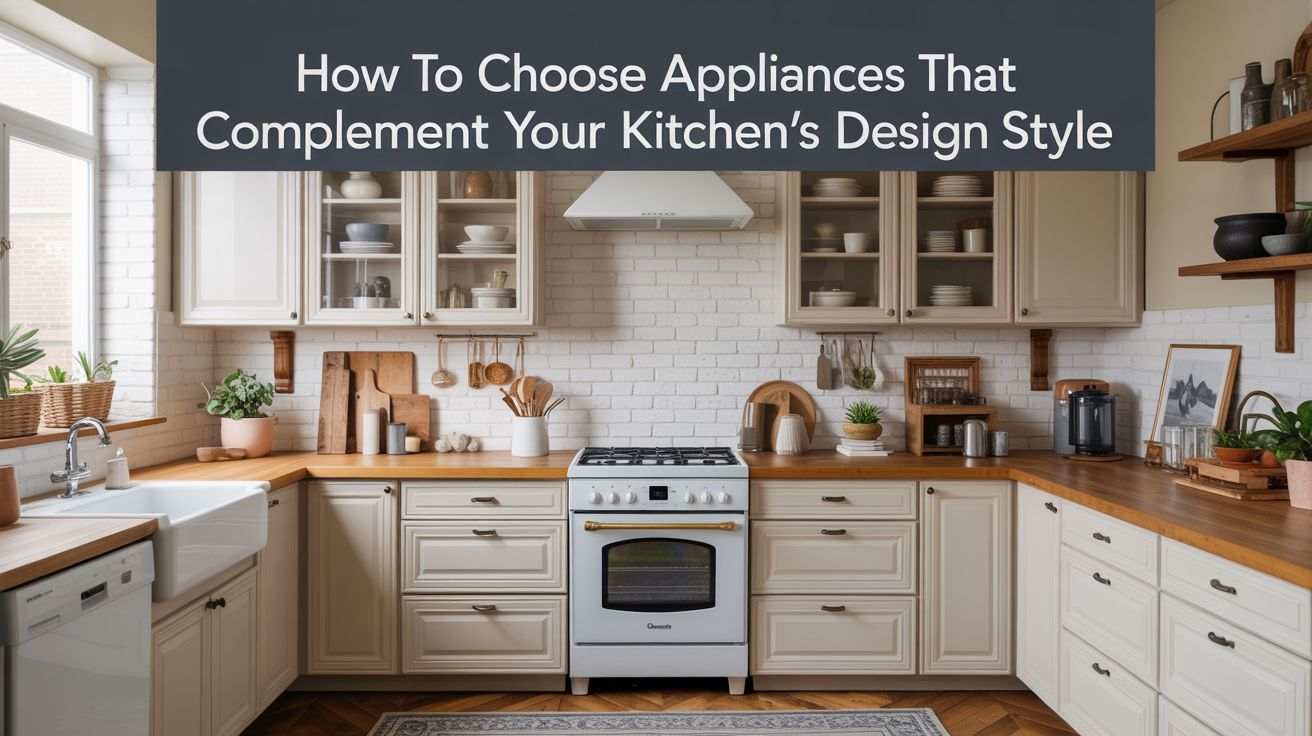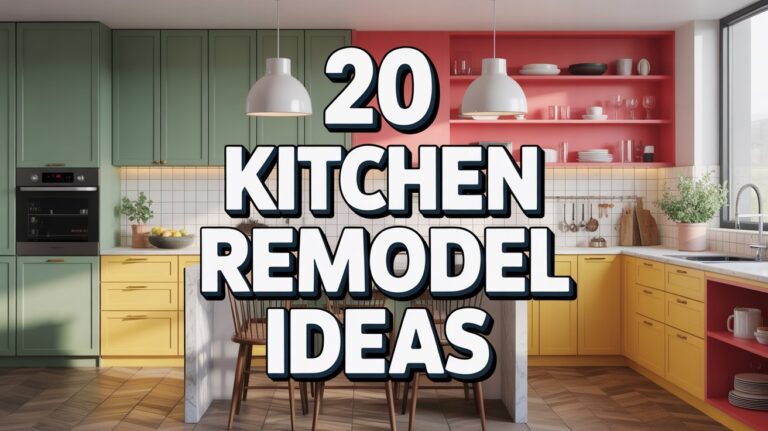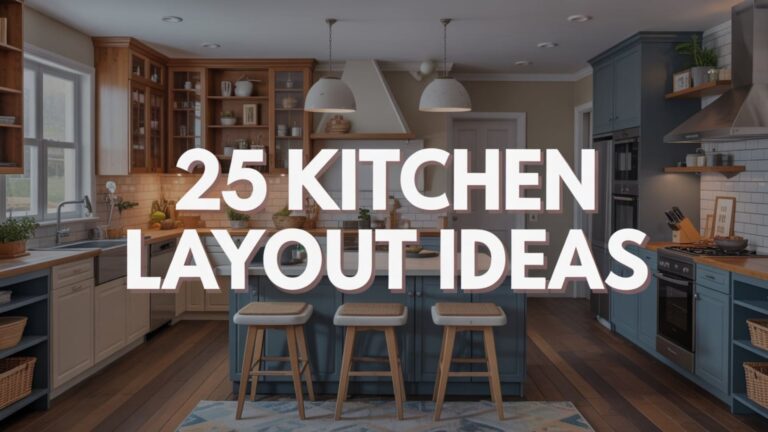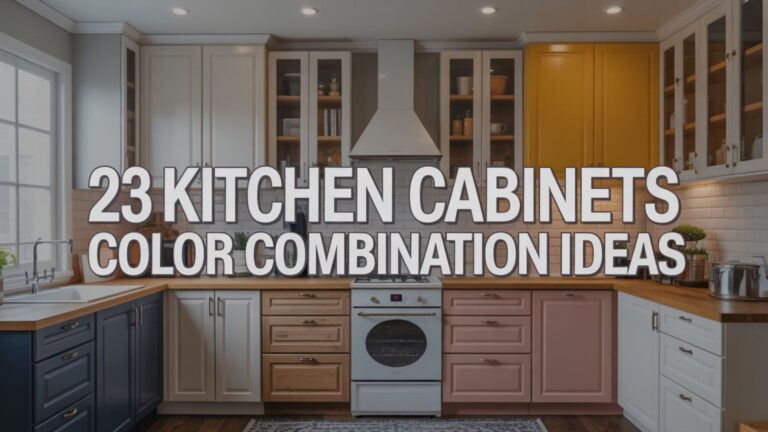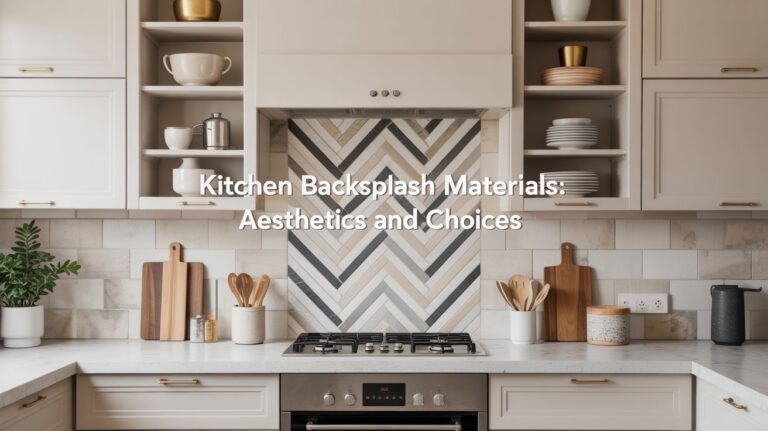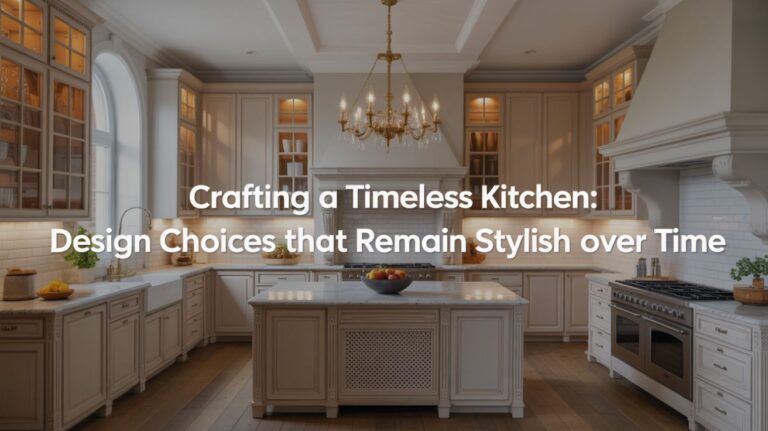How to Choose Appliances That Complement Your Kitchen’s Design Style
I have been, or can be if you click on a link and make a purchase, compensated via a cash payment, gift, or something else of value for writing this post. As an Amazon Associate, I earn from qualifying purchases. Please read my full Affiliate Disclosure for more information.
To choose appliances that complement your kitchen’s design, start by defining your vibe—contemporary, traditional, or rustic-industrial—and pick options that blend in or stand out with purpose. Favor panel-ready or built-in units for a seamless look, and match finishes and metals to your color palette. Balance sizes to avoid crowding, and use simple hardware with clean edges for a calm feel. With well-placed accents and cohesive textures, your space gains timeless polish—and there’s more to explore below.
Key Takeaways
- Align appliances with your chosen mood (modern, traditional warmth, or rugged-industrial) and use built-in panels for seamless cabinetry integration.
- Coordinate finishes and metals to a dominant color palette with subtle hardware and textures to avoid clashing.
- Balance sizes and sightlines, using flush panels and built-ins to maintain a calm, cohesive flow.
- Choose panel-ready or premium pro-style options that match your design ethos and prioritize quiet, efficient performance.
- Minimize visual clutter with simple lines, integrated appliances, and thoughtful placement to keep the space timeless and adaptable.
Assessing Your Design Vibe: Contemporary, Traditional, and Rustic-Industrial
Choosing a design vibe is about pairing form with function, so start by sensing how you want the space to feel: clean and modern, warm and traditional, or rugged with industrial accents. You’ll align elements around a central mood, guiding every appliance choice. In contemporary kitchens, prioritize sleek color coordination and minimal ornament; smooth surfaces and integrated panels keep the line clean. Traditional vibes reward warm materials and cohesive tone, where color and texture mingle gracefully. Rustic-industrial blends thrive on deliberate material pairing—metal, wood, and stone balanced against soft lighting. Trust your instincts, and let your vibe dictate performance needs.
Understanding Finishes: Matching Metals, Colors, and Textures
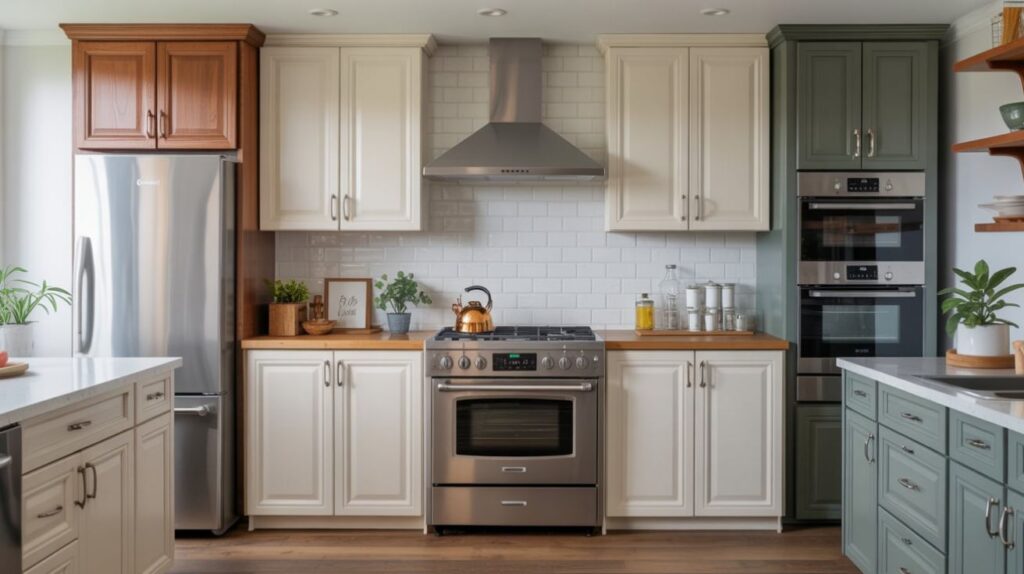
Finishes tie the room together by connecting metals, colors, and textures into a cohesive whole. In this section, you’ll learn how to pair metal finishes with your palette to avoid clash and create harmony. Start with a dominant metal finish for appliances, then echo a secondary tone in hardware or fixtures. Consider color coordination by leaning on neutral bases and introducing an accent hue through small appliances or accessories. Textures matter too: matte, satin, and polished surfaces reflect light differently and affect perceived warmth. Aim for balance, avoiding too many competing metals, to achieve a refined, timeless look.
Size, Proportion, and Built-Ins: Creating Seamless Integration
Size and proportion set the rhythm of a kitchen, guiding how appliances sit within the flow of counters, cabinets, and built-ins. You’ll balance widths and heights to avoid crowding, align with existing lines, and respect sightlines from work zones to seating. Think countertop compatibility from edge to edge, ensuring seamless progressions where surfaces meet appliances. Consider color coordination so finishes read as deliberate, not accidental, letting metals, panels, and lacquers echo your design story. Built-ins should feel integrated, not tacked on; choose flush panels or matched reveals. The result is calm efficiency, where every piece feels purposefully placed and visually cohesive.
Silhouette and Style: Panel-Ready, Pro-Style, and Hidden-Front Options
Panel-ready, pro-style, and hidden-front options let your appliances fade into the room’s line and texture rather than shout from the counters. Your choice shapes silhouette without sacrificing function. Panel-ready models blend with cabinetry, creating a seamless flow while preserving square footage and a calm visual. Pro-style appliances offer bold lines and commercial nuance for a refined, professional vibe without dominating the kitchen. Hidden-front designs tuck controls and doors behind cabinetry for a minimalist facade. Consider appliance material and how it complements finishes, textures, and color. Energy efficiency remains essential, guiding selections toward quieter operation and lower utility impact.
Performance Meets Aesthetic: Choosing Features That Matter
Choosing features is where performance and style meet. You want appliances that work beautifully now and remain reliable over time. Prioritize core functions: efficiency, quiet operation, precise temperature control, and intuitive controls. Smart tech isn’t a gimmick—it provides scheduling, diagnostics, and remote tweaks that reduce waste and simplify life. Look for energy-efficient ratings and consistent maintenance needs. Eco friendly materials matter, from interior coatings to exterior finishes, signaling durability and lower environmental impact. Balance must-haves with aesthetics: clean lines, tactile interfaces, and cohesive finishes. Informed choices deliver appliances that perform well, feel premium, and age gracefully without clutter.
Cohesion With Cabinets and Countertops: Visual Flow and Harmony
When it comes to cohesion, the kitchen should read as a single, seamless space where cabinets and countertops echo one another in color, texture, and scale. You’ll achieve this through deliberate color coordination and material consistency that ties surfaces together, not by matching every piece exactly. Aim for a restrained palette and shared finishes—matte versus glossy, warm wood tones with warm stone, or cool whites with cool grays. Consider edge details and seam placements to reinforce flow. Prioritize rhythm over repetition: repeat a subtle cue across elements to unify the design without visual overload. The result is harmonious, intentional, and visually calm.
Lighting and Ventilation: Enhancing the Overall Look
Lighting and ventilation don’t just serve function—they shape mood, scale, and texture in the room. You’ll want lighting that highlights materials without glare, plus ventilation that quietly keeps air fresh. Choose layers: ambient, task, and accent lighting, all dimmable for flexibility. Consider ceiling-integrated fixtures for clean lines, and under-cabinet LEDs for practical glow. Opt for smart technology where it simplifies control and energy use, like adaptive dimmers and programmable schedules. For sustainability, prioritize eco friendly options—LEDs, efficient fans, and green-certified fittings. Balance airflow with design by selecting vents that blend, not clash, with your cabinetry and finishes.
Practical Tips for Mixing Freestanding and Built-In Appliances
Mixing freestanding and built-in appliances works best when finishes match and read as one—focus on cohesive tones, textures, and hardware. Aim for size and placement harmony so every piece feels intentional, not an afterthought. Pair transitional styles thoughtfully to blend contrasts without shouting, and you’ll create a kitchen that’s both functional and visually seamless.
Matching Finishes Effect
Blending freestanding and built-in appliances is about a unified finish, not exact matches; the goal is cohesion that reads as intentional rather than mismatched. When you plan, focus on shared undertones and subtle texture, not perfect sameness. Consider appliance color schemes that echo your cabinetry, countertops, and hardware, creating a cohesive canvas. Aim for finish durability through quality materials and consistent sheen, so scratches and fingerprints read as minor, not jarring. Balance contrasts with deliberate overlap—match trims, panels, or control styles in small doses. With thoughtful pairing, your kitchen gains a refined, timeless rhythm rather than a disjointed look.
Size and Placement Harmony
Size and placement matter more than exact matches. You’ll achieve harmony by sizing gaps and aligning lines, not by forcing identical silhouettes. When mixing freestanding and built-in, prioritize countertop compatibility—ease of flow from edge to cabinet, and consistent heights for seamless workflow. Consider depth differences; reveal shallow recesses or trim to minimize visual clutter. Color schemes matter too: align appliance color schemes with cabinetry hues or introduce subtle contrasts that read intentional rather than random. A unified rhythm across appliances creates a cohesive canvas, while deliberate deviations become design accents. Plan, measure, and preview before committing; balance over perfection yields timeless cohesion.
Transitional Style Pairing
Transitional style thrives on thoughtful contrasts, so start by pairing freestanding and built-in pieces with a shared silhouette or a common detail—like a slim hardware line or a similar leg height. You’ll create cohesion without forcing uniformity. Aim for consistent color coordination across finishes, so metals and textures feel intentional rather than accidental. Consider appliance placement that preserves sightlines, balancing focal points with practical flow. Mix freestanding prep units with built-in panels that mimic cabinetry to reduce visual clutter. Prioritize simple, deliberate contrasts: subtle hardware, clean edges, and unified depth. The result: a refined, adaptable kitchen that reads as one design.
Conclusion
You’ve got the instincts to blend form with function. Pick appliances that echo your vibe, from finishes to silhouettes, so they disappear into your design story rather than shout. Prioritize proportional, built-in lines for a seamless flow, and choose features that genuinely simplify daily life. Let lighting and ventilation polish the look, not distract from it. With cohesive cabinets, countertops, and a thoughtful mix of freestanding and built-in, your kitchen becomes a timeless, curated space.
